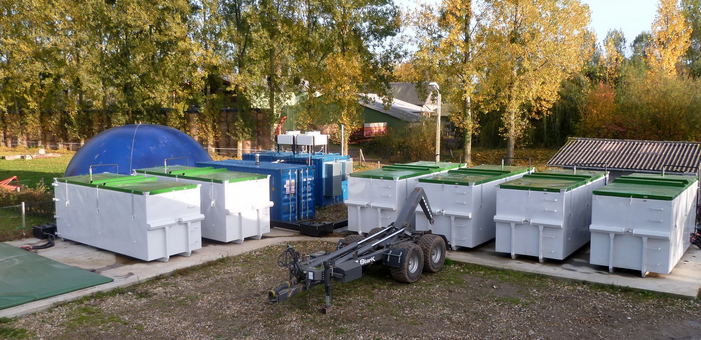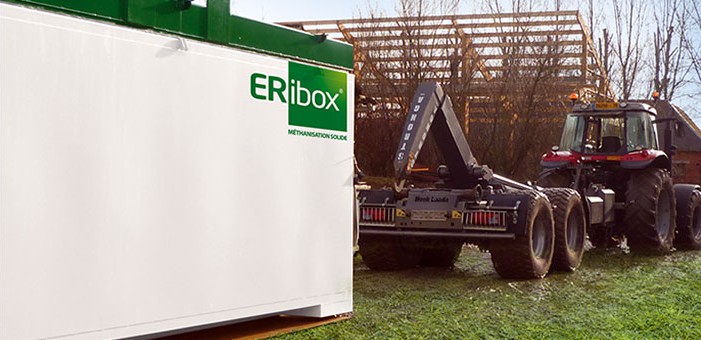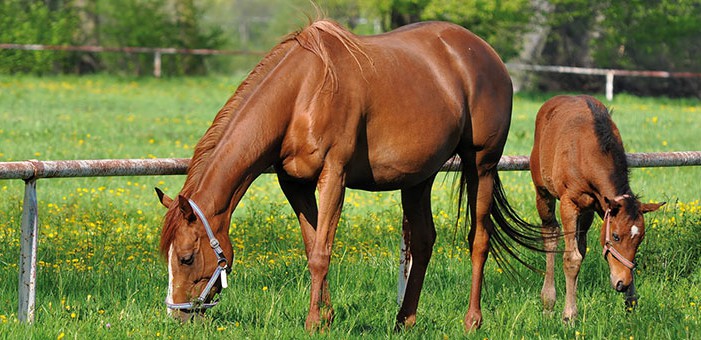ERigene technology
ERibox lies on a “dry anaerobic digestion” batch process based on the works of Isman and Ducellier (Algiers 1938), implemented in the form of industrial equipments, suitable for wide deployment in rural and farming environments.
The technology was developed through a 2 year collaborative Research and Development project involving academic teams from the University of Technology of Compiegne, Institut Polytechnique LaSalle Beauvais as well as agriculture professionals, from the Oise District Agricultural Council.
The design involved alternating laboratory work and experimental implementation in pilot farms.
What’s new about the ERibox system?
The dominant trend in biogas involves “continuously stirred” anaerobic processes that suit the context of Northern European farms.
ERigene has developed an innovative system, based on a dry anaerobic digestion batch process to better meet the technical and economical needs of the emerging small scale farm biogas market in France.
The innovation is based on the three guidelines of the research and development programs carried out by ERigène:
- Customer oriented: ERibox features were determined by observing farms operations
- Simple and reliable installation, implementation and operation
- Rational and industrial manufacturing of pre-assembled units, standardized components and supplies to provide customers with the best equipment, and reach economic performance even on smaller operation
The result is a biogas plant designed as “Farming Equipment”
Understanding, stability and reliability of the process
Solid-phase anaerobic digestion processes are reputedly difficult to control and may provide unstable performance. Seasonal variability of substrates, and moreover of substrate mix make the process difficult to predict.
Such instabilities, which are still not fully understood, result from the natural heterogeneity of substrates. They may sporadically slowdown or even temporarily inhibit digestion. Although not jeopardizing anaerobic digestion as a whole, these events may be limiting factors to performances and systematic reproductibility.
To overcome such limitations, ERigene and their partners has conducted R&D programs, focusing in characterizing these phenomena and determining the causes in order to improve the predictability of performance.
Specific control techniques were developed to stabilize the process.
Substrates and co-substrates
The ERibox system allows to process farming wastes on individual or micro-collective scales. The extreme diversity of farming configurations (polyculture, breeding of various species…) and contexts results in very diverse and variable sets of substrates to feed the systems.
This issue has been addressed from three complementary angles:
- Preparation methods of raw materials,
- quality of the inoculums,
- process management parameters to optimize individual output in real time
This work resulted in a predictive performance model.
How does ERibox work?
Mobile, modular digesters are driven by a control module, the central “brain” that monitors, controls and analyzes digesters’ individual performance.
ERibox is loaded using usual farm equipment
Within 3 to 6 weeks, anaerobic digestion produces:
- Biogas : rich in methane that can be converted into into electricity and heat, either for local usage or to be sold to a local power grid or client,
- Odorless digestate, free of seeds and germs, similar to high quality compost. Its agronomic properties reduce the needs for chemical fertilizer and herbicides.
ERibox systems can connect to ERigene’s laboratory network and to other ERibox systems. This feature allows remote monitoring of operation and advanced support to the users.






